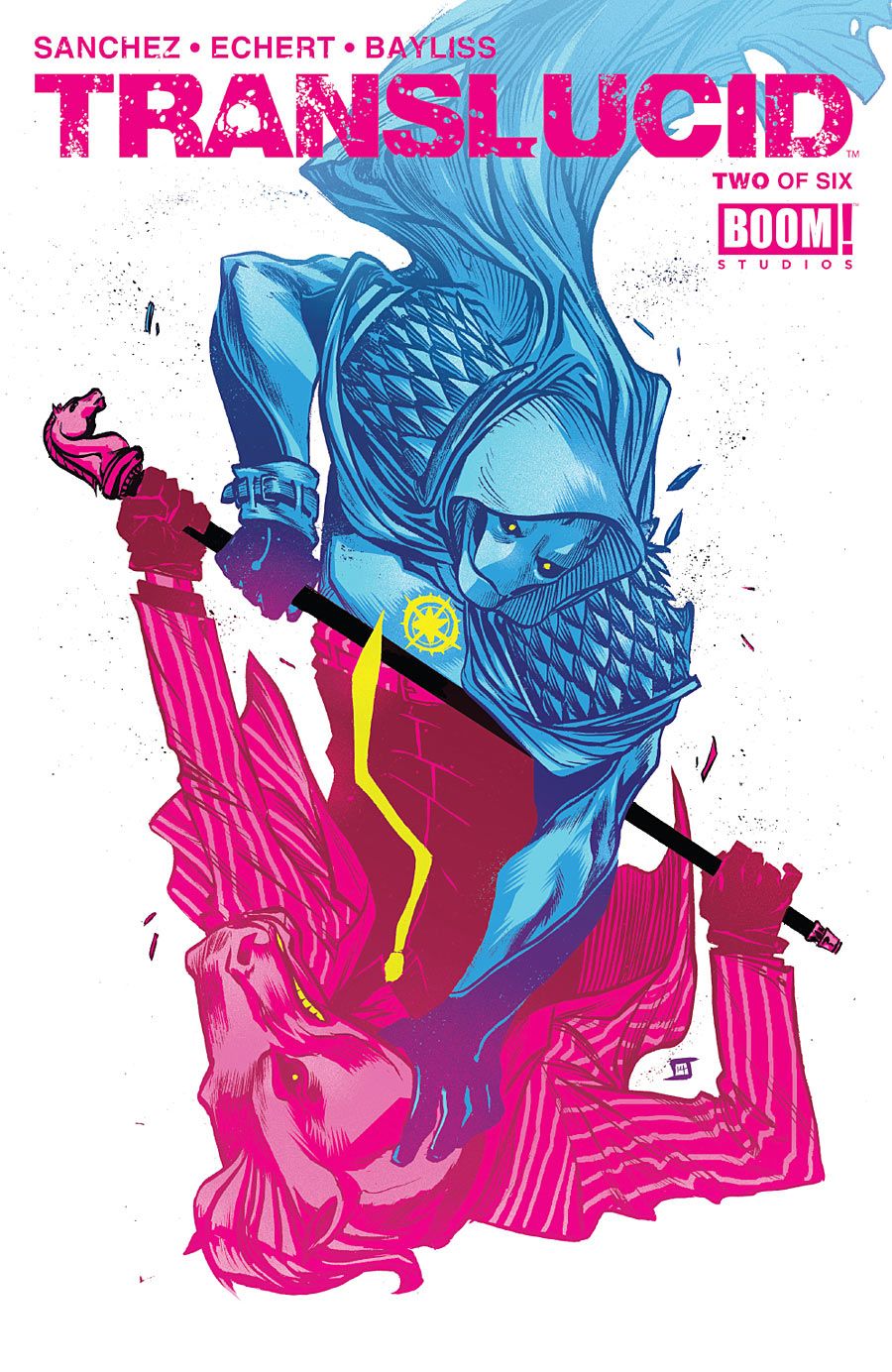Claudio Sanchez and Chondra Echert continue their quasi-venture into the superhero genre in "Translucid" #2, examining not only the dynamic between a superhero and his arch-nemesis, but also that of a young boy and his family and hinting at the possible connection. Artist Daniel Bayliss and colorist Adam Metcalfe competently and cleverly cover both worlds, both the mundane but violent world of young Cornelius Kinderland, as well as the larger and but still violent world of The Navigator and his foe known simply as The Horse.
After a deconstructionist focus on the superheroics last issue, Sanchez and Echert spend more time with Cornelius here, where readers learn that he has an older brother Drake, not to mention an abusive, alcoholic father and a mother who's constantly victimized and held captive by it. The parents are largely placeholders for the stereotypes associated with these roles, but the writers excel at characterizing the two brothers within the page time allotted to them.
Cornelius is highly intelligent and holds an almost obsessive fascination with science, which he uses to cope with the difficulties at home. Drake is a loving and highly protective big brother, who bravely stands up to his father and tries to plan for his little bro's future well-being. The connection between these two boys is actually the strength of the issue; they're both incredibly likeable and are the best-defined characters in the series so far.
The other part of the story features the first encounter between The Navigator and The Horse, after curiously chronicling a future battle last issue, the resolution of which has yet to be revealed. This issue's conflict is fairly typical hero vs. villain fare on the surface, but the revealing and almost cordial exchange between the two foes elicits even more questions about the presumed roles of superheroes and supervillains, questions that are just as provocative as those raised by Sanchez and Echert last issue. The Horse raises one particular question as to whom the true villains in the world really are, and readers are given pause, even if The Navigator is not.
Bayliss and Metcalfe play a large part in creating both of these worlds. Cornelius' reality is one that looks scratched and dirty, by way of Bayliss texturing of everything around him. The walls, the ground, the school bus he's tormented in; all look worn down and beaten, not unlike the emotional state of Cornelius himself. Metcalfe enhances this with colors that are clouded and blemished, as though the whole world is seen through one of the school bus' dirty windows. Both artists use these same techniques for The Navigator's world as well, but the bridges and skyscrapers of this reality make for a much brighter world, while being darkened at the same time with horrific criminal acts, both seen and implied, that belie its seeming bright and shiny façade.
What distinctly distinguishes the two realities more than anything else are Metcalfe's colors; muted pastels establish the blase mood of Cornelius' environment, while brighter secondary tones set a unique tinted, almost dreamlike look to that of The Navigator's. Cornelius' momentary nightmarish flashes of his surroundings are in brighter, contrasting tones that stand out from either reality. Almost absent is any usage of pure primary colors, an omission that becomes noticeable as the story moves along; noticeable enough to make more astute readers question if this is just the style put forth by the artists, or if there is a story-driven reason behind it. The eye-grabbing yin & yang-style cover by Jeff Stokely is symbolic of the story, both in terms of the events inside, as well as the overall struggle between what's presumed to be good and evil.
Sanchez and Echert drop some hazy and elusive clues that show there is some connection between these two realities, but whether one is a dream, hoax, or an imaginary story remains unclear. Nonetheless, it's enough to keep interest high; between the characterization, the questioning of superhero archetypes, and strange and almost surreal connection between two very different worlds, "Translucid" #2 is a remarkably gripping issue, even for those who might have missed #1.

